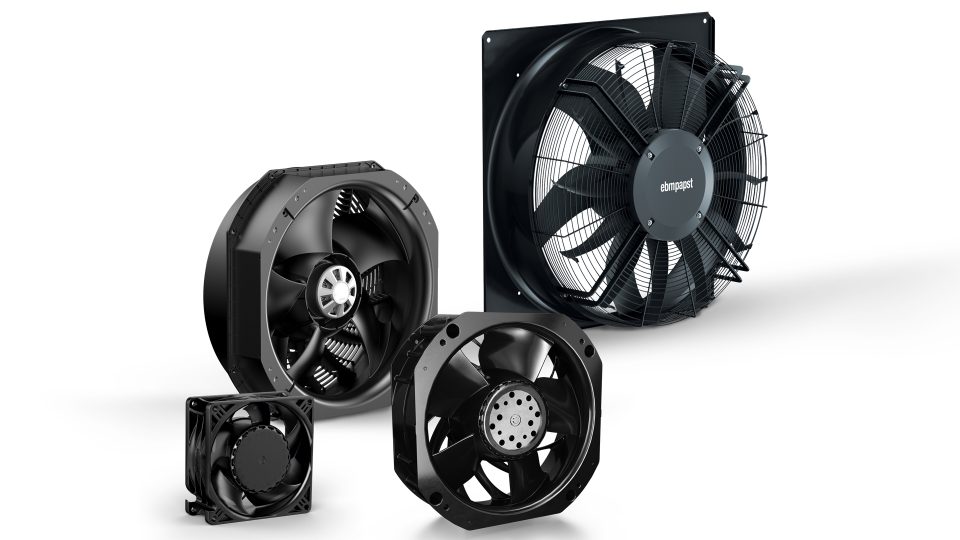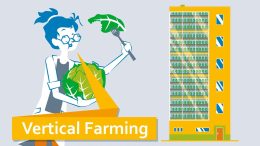WHAT THE TECH?! Is vertical farming the future of modern agriculture?
How does Vertical Farming work? What does it need?
For years, many experts have been trying to work out how humanity will feed itself in the future. It is certain that existing resources must be used more efficiently to provide people with the same standard of living, or to improve the supply situation for people in developing countries in a sustainable way.
In vertical indoor farming, plants are produced above one another in buildings, containers or in air-conditioned supermarket cabinets. It is seen as a future-oriented technology for ensuring a food supply, as this allows urban spaces to be used sustainably for agriculture, saving additional transportation time and costs.
Economical solutions are in demand
Fan and motor specialist ebm-papst has been working on this issue for quite some time now. There are a number of energy-efficient, ‘intelligent’ fans and drives suitable for the many different concepts. Furthermore, the specialist is also available as a dedicated engineering partner and system provider and offers support right through to complete automation solutions.

All the products are robust and operate reliably over the long term, even in adverse conditions. ebm-papst designs and supplies sophisticated software and hardware solutions that make vertical indoor farming as sustainable, economical and profitable as possible.
What does it need for efficient Vertical farms?
In addition to lighting, it is essential that these vertical ‘farms’ have appropriate air conditioning, regardless of plant type and cultivation technology. The potential of this technology can be only exploited if the light, nutrients, ventilation, temperature and humidity are right. The basic prerequisite for this is economic systems that always operate according to the demand and very efficiently, not only for the air conditioning and nutrient supply, but also in automated product handling and transport. Only then can indoor farms operate economically and sustainably.
Optimum air supply and air conditioning for every system size
There are different concepts for ventilation and air conditioning. Tunnel ventilation pushes the air through the building. However, central ventilation units installed on roofs are also common as is providing individual plants or floors with a targeted air supply via pipe and tube systems (Fig. 1), which must also be supplied accordingly. Different fans are required here: Compact axial fans move high air flows of up to 65,000 m³/h and operate reliably even at back pressures of up to 1,500 Pa (Fig. 2).

They are therefore particularly suitable for the tunnel supply. A comprehensive range of accessories enables further modifications to be made, such as guard grills. It is possible for the power supply to be 5 to 110 VDC or 11 to 480 VAC. Centrifugal fans are particularly impressive at high back pressures up to 5,200 Pa (Fig. 3). Their air flow rates are up to 30,000 m³/h.
They are available with forward or backward-curved blades and in a scroll housing or as freewheel fans as appropriate. Versions with external rotor motor in the impeller are also very compact and therefore require little installation space in the ventilation units usually installed on the roof. The power supply provided is 6 to 72 VDC or 85 to 480 VAC. Compact fans have proven their worth for air conditioning in supermarket cabinets, for ventilation of individual shelves and for cooling LEDs. They also operate at a high level of energy efficiency and contribute towards economical operation in this indoor farming concept.


Real-time production monitoring
For a high-yield harvest, the conditions for growth must be continually monitored to initiate targeted changes or quickly eliminate problems if required. ebm-papst helps with this using its digital services. Sensors and hubs ensure that all necessary and meaningful data is digitized (Fig. 6), whether it is the status of technical systems or monitoring air and water quality.

This enables all data on air conditioning, nutrient supply or lighting to be visualized in real time. For example, using an app, it is also possible to test settings or automatically receive current messages on a cell phone. The specially developed cloud applications provide the appropriate information and control options to optimize production and make it economical and sustainable.
DISCOVER MORE:
Aiming high in Vertical Farming
Efficient ventilation, air conditioning, automation with fans, motors and AGV from ebm-papst.


Leave a comment